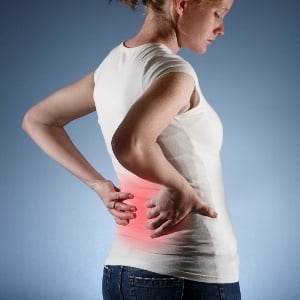
Although 90% of people with an acute or once-off episode of back pain will recover within six weeks, some 60% will have a repeat episode within a year and 30-45% will suffer repeated episodes of chronic or long-standing back pain.
In most cases, when someone has a first episode of back pain, the doctor is unlikely to recommend x-rays or further investigations for at least four to six weeks. This is because most episodes of back pain resolve on their own without the need for further investigations. Some people with other signs and symptoms in addition to back pain such as weight loss, a urinary tract infection, a bladder problem or with pain that worsens at night, may be referred for further investigations at once to exclude the possible presence of other medical problems.
Although people with acute back pain may be advised to follow a “wait-and-see” approach initially, it is important for the person with back pain to be offered and to take measures for effective pain relief. The control of the symptoms of back pain and ensuring effective pain relief are important factors in the treatment of acute back pain.
Medicine
Medicines that may be used to manage acute back pain include simple painkillers such as paracetamol, the various anti-inflammatories such as ibuprofen or naproxen (which are available over-the-counter) as well as the many prescription-only anti-inflammatories. In many cases, an anti-inflammatory medicine is recommended which may be taken together with paracetamol (every four to six hours). If pain relief is not sufficient, an opiate medicine such as codeine may be added to the paracetamol.
Whether bed rest is advised in the treatment of acute back pain depends on the severity of the pain. People with less severe symptoms may be advised to follow a “modified bed rest plan” for up to three days. The “modified bed rest plan” means that the person is booked off work, must rest in bed but still do the activities of daily living such as getting up to make a cup of coffee, using the bathroom etc. Supportive corsets may be useful to wear while performing small amounts of activity in the first two to three weeks of recovery and thereafter when exercising. People with severe back pain may be advised by the doctor to follow the “modified bed rest plan” for up to ten days.
Exercise
People with less severe symptoms of back pain may start to exercise after about two weeks while people with severe symptoms probably need to wait for four weeks before starting to exercise. Activities that do not flex the spine are best – walking and swimming are usually preferred - but it is advised to speak to your doctor or a physiotherapist for further advice.
Other measures that have been shown to be useful in acute back pain include the “hands-on” methods of massage and spinal manipulation. Traction, however, is best avoided! Speak to your doctor or a physiotherapist for advice about the “hands-on” approach to acute back pain.
For more information on back pain and the treatment of back pain, please speak to your doctor for advice. Your doctor is able to decide which medicine and treatment is best for you in order to manage the symptoms of your condition safely and effectively.
Abstracted from a presentation by Prof Stanley Brighton, rheumatologist in private practice.
Read more:
Preventing back pain
Managing back pain




 Publications
Publications
 Partners
Partners















